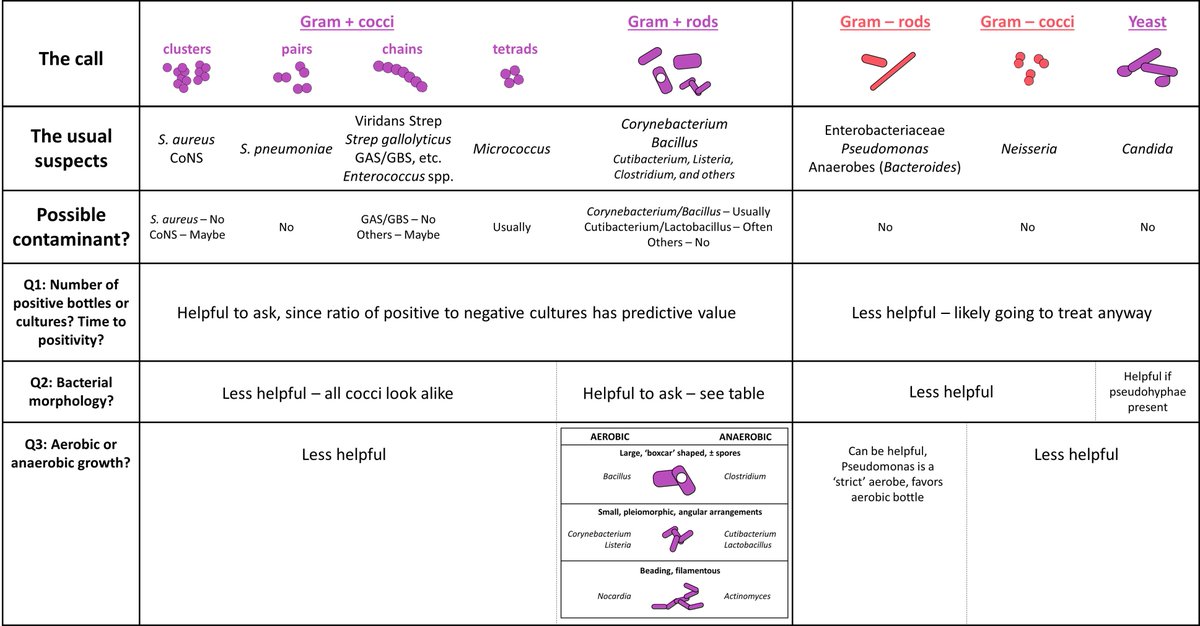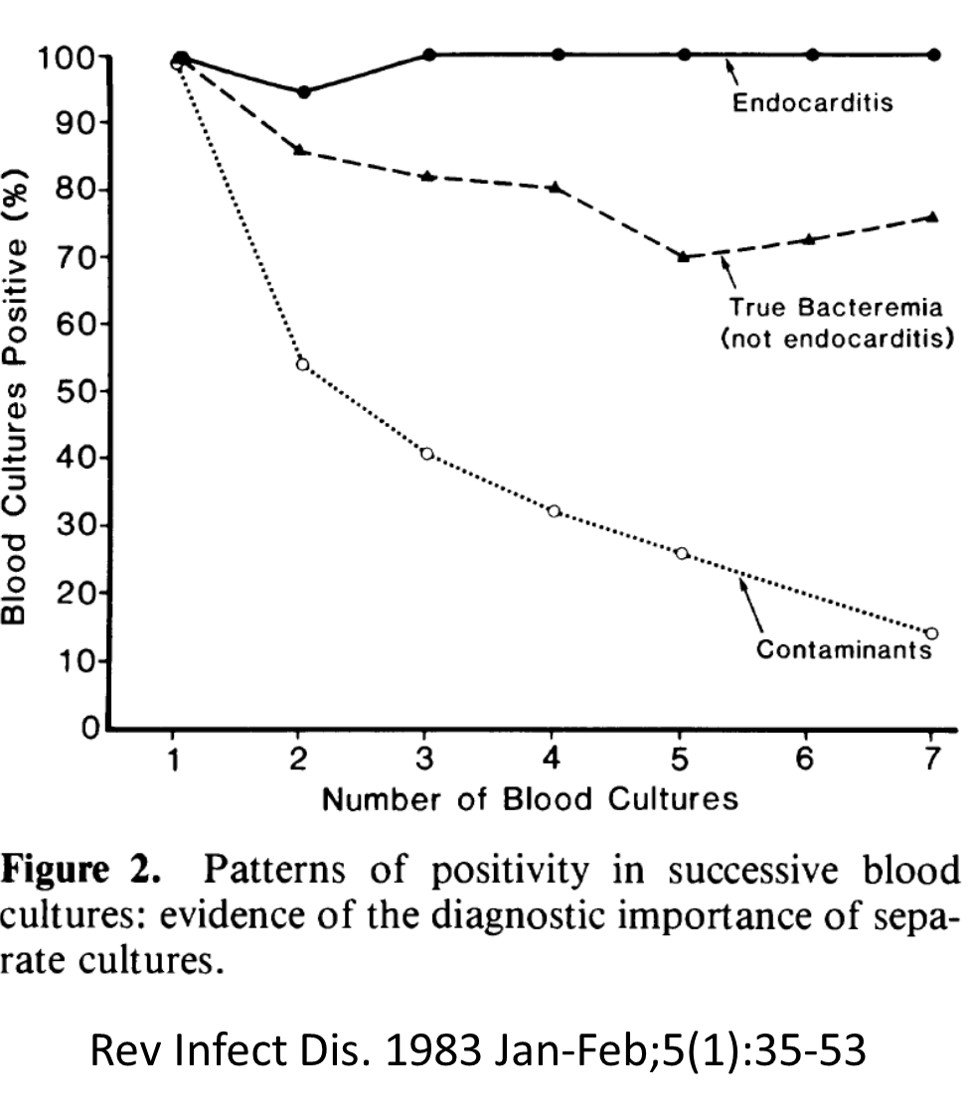@rabihmgeha shared a fantastic approach to positive BCx! I use a similar schema, but add ‘Questions to ask the lab/what to do next?’ since #ID usually doesn’t get the ‘critical result’ call from micro, and I want to empower those who do with actionable knowledge.
Like @rabihmgeha's schema, the orgs are deliberately ordered this way: Gram(+) orgs are often [skin] contaminants, Gram(–) orgs & yeast are not. Remember that clinician adjudication is the ‘gold standard’ for deciding what is a contaminant!

Now, w/ the bugs organized, when you get that call from the micro lab, here are 3 questions to ask yourself/the lab:
1) Number of positive bottles/cultures and time to positivity?
2) ‘Shape’ of the bacteria?
3) Aerobic or anaerobic bottle?
Let’s break these questions down.
For Gram(–) rods, the pearl is that Pseudomonas is a ‘strict’ aerobe and ought to grow preferentially in the aerobic bottle – thus, a GNR that grows in the anaerobic bottle first is less likely Pseudomonas. Of course, always exceptions to these pearls, so await speciation!
Let’s put all this together in a final summary chart.
I have to give credit to @colleenkraftMD for teaching me this approach as a fellow! What do you think #IDTwitter? @CarlosdelRio7 @Ahmed_HBabiker @serotavirus @natesumMRSA @CPSolvers













